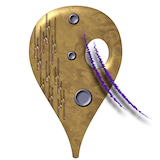Posts From 2008-07
- July 2008
-
(2008-07-30) A Tale of Two Dwarves
-
(2008-07-29) Tomb2 comments (latest 18 hours later)
-
(2008-07-16) iPhone adventures9 comments (latest 2014-06-27)
-
(2008-07-07) Portal2 comments (latest 2015-12-18)

